The Best Channel Strip Units 2023 - All Prices
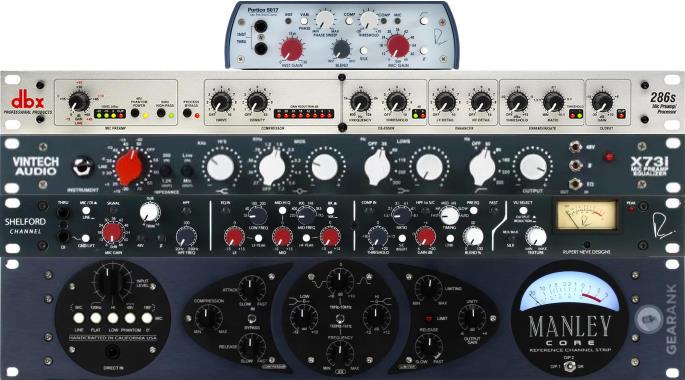
Author & Contributors
Raphael Pulgar
I've been an audio engineer for 20 years specializing in rock and metal recordings. I also play guitar and produce original music for my band and other content creators.
The Best Budget Channel Strips under $500
dbx 286s
Cons
- Simplified controls limit tweakability
Pros
- Great sounding preamp
- Gate/expander one of the best I've tried
- Dynamics and EQ well thought out
Rackmount channel strips are usually more of a "medium" type of studio gear for a lot of people. I've always done software monitoring during recording but sometimes the latency builds up especially when the tracks and plugins start piling up.
I also wanted to have some processing going into the audio interface for general communication, so I started looking into channel strips for my project studio.
Starting off, your signal gets put through the Preamp section. While I don't think dbx based the circuitry on API gear, to my ears, it reminds me of what API preamps sound like. It smooths out the high frequencies with harmonics without muffling the input. Other features of the preamp include a standard 48V phantom power and 80Hz high pass filter at 18dB/octave.
The roll-off on the filter is enough to deal with wind and vibration transfer from the mic stand without affecting the overall tone of the mics I use. The input levels are visible thanks to 4 LEDs that indicate the amount of signal passing through the preamp.
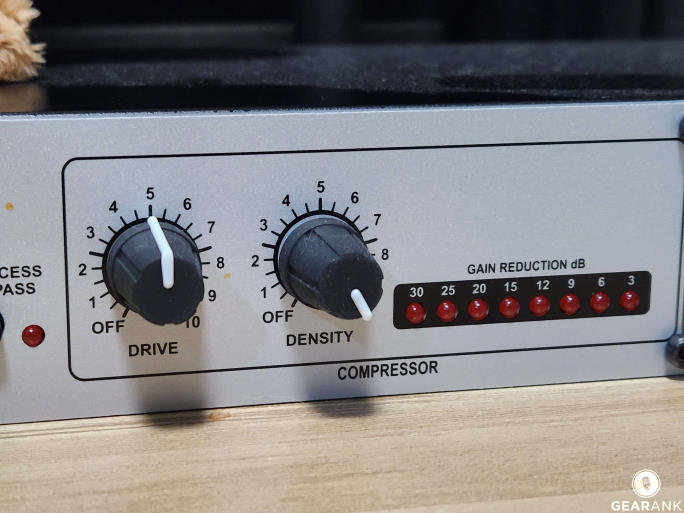
The dbx 286s compressor section works well even with just 2 controls.
The compressor section looks basic at first glance. The controls are a bit different from what most would expect. Drive is basically your threshold control, and the compression ratio is fixed at 4:1. The density knob is a release time knob with fully counterclockwise giving the slowest release and fully clockwise giving the fastest.
Equalization is also simple on the outside. Labeled "Enhancer" on the unit, the low frequencies are a combination of a boost at 80Hz while simultaneously cutting out 250Hz as you go higher with it at a ratio of 2:1. The high frequency control employs a dynamic shelving EQ.
I noticed that with higher speaking levels, the high frequencies don't get proportionally louder but retain clarity throughout the entire voice's dynamic range.
The gating is very natural at ratios lower than 2:1 and filters out my A/C in the background well enough for general recording.
Tweakers that rely on minute adjustments of various parameters might find the controls a bit too limited. Even so, I actually preferred this simplicity because it didn't keep me fixated on getting everything right.
The great price point and feature set make it great value for any studio. Even comparing it with more expensive channel strips, it packs enough of a punch to hang with the big boys, especially with how well the dynamics are handled.
Voiceover example recorded with the dbx 286s*
The dbx 286s is a great addition to any studio, big or small. As a vocal chain, it adds a professional sheen to singing and great dynamic control for spoken word and voice overs.
While the simplified controls may not be to everyone's liking, each module is cleverly engineered to have a useful setting no matter what the input. If you're looking for your first channel strip or preamp, the dbx 286s is a great choice at a great price.
If you'd like a detailed explanation of all its functionality, then take a look at my extended dbx 286s review.
Specifications
- Channels: 1 (some people mistake the Insert for a second channel)
- Inputs: XLR (mic), 1/4" TRS (line), 1/4" TRS (insert)
- Outputs: 1/4" TRS - 100Ω balanced / 200Ω unbalanced
- Preamp: 0dB to +60dB gain with phantom power on XLR pins 2 and 3
- Compressor: ratio 4:1 with a threshold range of -40dBu to +20dBu
- De-Esser: frequency range 800Hz to 10kHz High Pass, 12dB/octave
- Enhancer: with high frequency program-controlled shelving equalizer, approximately 15dB maximum HF boost, and low frequency bell-shaped boost @ 80Hz, bell-shaped cut @250Hz, ratio is approximately 2:1
- Expander/Gate: with an adjustable expansion ratio from 1.5:1 to 10:1
- Rackmountable: Yes - 1U
| Website | Source | *Rating Value |
| Gearank | Raphael Pulgar | 95/100 |
| YouTube | Podcastage | 98/100 |
The Best Channel Strips under $1000
ART Voice Channel
Cons
- Multiple options might be overwhelming at first
- Better sounding (but less versatile) options at this price
Pros
- Extremely versatile with a multitude of controls
- Tube preamp tone warms up even the brightest condenser mics
- Tone shaping options abound with a Parametric EQ
ART is known for their affordable outboard gear, especially their mic preamps. The ART Voice channel is a full-featured channel strip with all the tools you need to get an amazing sounding track onto recording. It features a Class A Tube Preamp with up to +60dB Mic gain and +40 dB Line level gain.
While the front panel looks overwhelming at first glance, seasoned engineers will feel right at home with the controls.
It includes a semi-parametric EQ that can be patched pre- or post- dynamics section, multiple insert points, an expander/gate section (one of my biggest requirements in an outboard channel strip), and a special impedance control to fine tune different mics to the preamp.
Switching the tube voltage changes the response of the preamp mild tube tone to harmonically rich. Cheap microphones can benefit from the warmth and saturation of the tube section.
Additional I/O makes it versatile enough to integrate into an already busy rig while USB out lets it function as a direct recording solution for smaller setups.
While a blessing for experienced engineers, the complex layout and various controls might be overwhelming for someone still learning the craft, but don't let that stop you from adding it to your rack.
The ART Voice Channel is a versatile piece of gear at a great price. It's an amalgamation of many important pieces in a signal chain and works well with both vocal and instrument recordings. That being said, it's not the most transparent preamp so if that's what you're after, look elsewhere.
Specifications
- Channels: 1
- Inputs: 2 x Combo (XLR/TRS), 1 x ADAT (Optical)
- Outputs:1 x AES/EBU (XLR), 1 x S/PDIF (Coax), 1 x S/PDIF (Optical)
- Preamp: Class A vacuum tube (12AX7), up to +60 dB (Mic) +3 dB to +40 dB (Line) with 48v phantom power
- Compressor: 1:1 to 20:1
- Equalizer: Low Frequency: 50/150 Hz Selectable, MID 1 Frequency: 100 Hz to 3kHz continuously variable, MID 2 Frequency: 500 Hz to 15kHz continuously variable, High Frequency: 5K/15kHz Selectable
- Rackmountable: Yes - 2U
| Website | Source | *Rating Value |
| Sound On Sound | Mike Senior | 90/100 |
| Gearspace | PMoshay | 97/100 |
Black Lion Audio Eighteen
Cons
- Inadequate as a standalone preamp; synergizes best with other outboard gear
Pros
- Classic solid state preamp tones inspired by landmark designs
- Pultec-style EQ brings familiar sheen
- High quality components
Nothing beats the great crunch of a pushed channel as an effect on vocals. Even in more subtle flavors, a nice amount of saturation on vocals and other instruments adds to the "glue" effect during a mix.
The Black Lion Audio Eighteen was designed with character in mind. Featuring a solid state, CineMag transformer-based induction EQ/Preamp, it puts mojo and vibe at the forefront.
The controls of the EQ will be familiar to those who have used Pultec-style equalization. It's a great sounding circuit that adds brilliance without becoming harsh. This trait is carried over to the Eighteen and improved upon with custom componentry and tweaks.
Even with copious amount of harmonic saturation from the 1831 op-amp it was named after, the Black Lion Audio Eighteen has great control over the amount of distortion and does not introduce unmusical audio clipping.
However, as a channel strip, it lacks a compressor and other processing that could have pushed the functionality a little bit. That being said, it's best used in a studio that has the outboard gear necessary to synergize with it.
All in all, the Black Lion Eighteen is a refinement of classic, time-tested designs that fits very well into a well-equipped studio. Do note that I do not recommend it as a first purchase for a studio just starting out because of the lack of other features like compression.
Specifications
- Channels: 1
- Inputs: 1 x XLR)
- Outputs: 1 x XLR
- Preamp: Solid State Induction EQ Preamp. OpAmp circuitry with CineMag Transformers
- Compressor: none
- Equalizer: 2-band EQ, Lowpass Shelving, 80Hz Highpass, 10kHz Lowpass
- Rackmountable: Yes - 2U
| Website | Source | *Rating Value |
| Sound On Sound | Neil Rogers | 94/100 |
| MusicTech | John Pickford | 90/100 |
The Best Channel Strip Units under $1500
Rupert Neve Designs Portico 5017
Cons
- Needs more options for tone shaping
Pros
- Big Neve console sound in a compact package
- Sweetens various sound sources like vocals and instruments
- Onboard compressor provides light transient smoothing
Rupert Neve and his name have been one of the most recognizable trademarks in the audio engineering industry. He has done designs for both his own brands and others like Focusrite. His designs have a trademark "sheen" and polish and what he calls a "sweet" sound.
The Rupert Neve Designs Portico 5017 is unlike other channel strips. For starters, it is in a desktop format rather than a rackmount or modular unit. This form factor makes it ideal for project recording studios without rack space but still want the "big console sound" the Neve name is known for.
It features a solid-state preamp with up to +66dB in gain, as well as phase and high pass switches. The Silk switch engages a vintage-styled character reminiscent of early Neve console designs. The compressor offers light dynamic range augmentation with just the right ratio for dynamic singing and leaves room for further processing down the line.
The sound is unmistakably "Neve". For vocals, this results in a sweet-sounding high end especially for female vocals. Strident singers get tamed by the Neve's richness without sacrificing sparkle.
On bass, the Portico 5017 clears up any muddiness on the lower range while adding a nice sheen to the top end without sounding brittle. For miked up electric guitars, fat tones get streamlined to fit in mixes better.
What it lacks to me though are additional equalization and dynamics options. The optical compressor has a variable threshold but a fixed 2:1 ratio. This limits the versatility of the unit but is adequate for a gentle squeeze on bass and vocals.
The basic Neve tone is adequate for great sounding sources, but additional tone shaping options would have made it even more versatile.
For big studio polish in a portable desk format, the Rupert Neve Designs Portico 5017 is the perfect companion for the small to medium studio as well as more mobile setups.
Specifications
- Channels: 1
- Inputs: 1 x XLR (Mic), 1 x 1/4" (Hi-Z)
- Outputs: 1 x XLR, 1 x 1/4" (Mic Out)
- Preamp: Solid State with up to +66 dB gain with 48v phantom power
- Compressor: 2:1 ratio with a 10dB to -20dB threshiold
- Equalizer: Highpass filter: 12dB/octave @ 80Hz
- Rackmountable: no
| Website | Source | *Rating Value |
| Vintage Guitar | Pete Prown | 92/100 |
| Audiofanzine | fabamarie | 100/100 |
Vintech X73i
Cons
- Not the pick if you're looking for a 1:1 vintage reproduction (warts and all)
Pros
- Modernized 1073 look and feel
- Smooth, harmonically rich top end
- Modern components with tight tolerances perfect for stereo matching
- More affordable and reliable than vintage units
The 1073 style preamp/EQ has always been a community favorite. The design lends itself well to warm and polished sounding vocals with a focused and clear midrange and a shimmering top end.
The Vintech X73i is based on the legendary 1073 design build with production techniques that allow Vintech to make it more accessible to a greater majority of studios and engineers.
It features a Class A solid state preamp with a familiar EQ section that allows for various cuts and boosts. The analog circuitry makes even the most extreme settings sound musical in many contexts.
From a distance, The X73i would pass as an actual Neve unit with the color scheme. The X73i injects the Neve mojo with a more polished, modern twist.
With compression, the high end never gets overemphasized as sibilance gets smoothed out across a broader spectrum thanks to the harmonic content -- just as the unit the X73i was based on.
The modern construction and componentry definitely give it a "brand new" sound compared to vintage units with aged components and lower tolerances.
This, however, means that the X73i is not a 1 to 1 reproduction. It favors consistency over vintage accuracy so having a stereo preamp pair would be more consistent (and affordable!) than getting two vintage units.
If you're a fan of the 1073 preamp/eq and have a limited budget to outfit your studio with a channel strip, the Vintech X73i is your best bet to get that N style polish.
Specifications
- Channels: 1
- Inputs: 1 x XLR (Mic), 1 x XLR (Line), 1 x 1/4" (Line)
- Outputs: 1 x XLR, 1 x 1/4"
- Preamp: Class A solid state with up to +70db gain with 48v phantom power
- Compressor:none
- Equalizer: Low shelving, Fixed Hi EQ, Variable Low EQ, Variable Mid EQ frequencies
- Rackmountable: Yes - 1U
| Website | Source | *Rating Value |
| TapeOp | Allen Farmelo | 95/100 |
| Gearspace | ToneJones | 95/100 |
The Best Channel Strips over $1500
Manley Core Reference
Cons
- Limited tweakability compared to individual units from Manley
- No noise gate
Pros
- Adds richness and complexity to brighter, detailed mics
- Distilled versions of Manley's best circuits in one unit
- Custom high-end componentry
- Great entry into boutique gear
The Manley Core Reference is a channel strip based on Manley's award winning VOXBOX. With a Class A tube mic preamp (1 x 12AX7 for gain and 1 x 6922 White Follower) and custom Manley transformers, the Core Reference was designed to be as it's named: the core of your project studio.
The Core Reference brings together Manley's most popular modules and technology into an "essentials" package channel strip.
Aside from the tube preamp, the Core Reference has a baxandall eq, ELOP compressor and Brickwall limiter.
Going into the preamp, the overall tone is crisp and clear without making bright condenser mics thin or brittle. This is a big plus for bright mics like the Sony C800g or C100 to have a richer top end without totally sacrificing the tonality they are known for. Manley's own Reference series condenser mics have an extended top end. With that in mind, if your mic collection consists of bright mics, this unit's preamp is a godsend in keeping harshness at bay.
That said, the Core Reference has its own compromises. Its modules are not as fully fleshed out as the main units Manley offers such as their individual dynamics and EQ lines. The lack of a noise gate/expander (which is important to me) is also something to look out for.
The Manley Core Reference is a great entry point to high end gear. It allows a generous taste of what boutique gear can do for your sound without the collective cost of owning multiple modules.
Specifications
- Channels: 1
- Inputs: 1 x 1/4", 2 x XLR
- Outputs: 2 x XLR
- Preamp: Class A tube mic preamplifier (1 x 12AX7 for gain and 1 x 6922 White Follower), Manley hand-wound transformers, Mic Pre Selectable Gain 40dB or 60dB, Line Amp Selectable Gain 20dB or 40dB
- Compressor: ratio 3:1, variable Attack and Release controls, Threshold control,
- Equalizer: Low and High Baxandall Shelves (80Hz and 12kHz) with ±12dB range, Sweepable Midrange Bell EQ (100Hz – 1kHz) or (1kHz – 10kHz) with ±10dB range, 120Hz High Pass Filter switch
- Rackmountable: Yes - 2U
| Website | Source | *Rating Value |
| Sound On Sound | Bob Thomas | 97/100 |
| Bonedo | Felix Klostermann | 90/100 |
Rupert Neve Designs Shelford Channel
Cons
- No master output control
Pros
- Developed and refined by Rupert Neve
- Takes the best of classic Neve designs into a channel strip
- Unmistakable Neve character that can be dialed in or out
The Rupert Neve Designs Shelford Channel is the closest you can get to a large format channel strip, refined for the modern recording studio.
It features the classic Inductor EQ from the Shelford 5052. The preamp was designed with a direct-coupled transformer input and gain is provided by the custom transformer.
The equalizer bass section is based on the 1064, known for its smooth sounding and resonant bass harmonics. The midrange is based on the famous 1073 and is best for sweetening vocals and instruments. The compressor is based on a Neve-designed 2254. All this is rounded off with toggles for the "Silk" setting and as well as a texture knob for more character.
The one thing missing for me is a master output control. Some of us might be a bit gain-happy when it comes to recording so without a master output, it might hit your interface too hard, even with the gain turned down all the way. An unlikely scenario but still something to watch out for.
The Shelford Channel provides the classic sound associated with the name in a more accessible format. It preserves the tone shaping and character of the best of Rupert Neve's circuit designs over the years while making it more accessible to those who can't fit a large format console in their bedroom (hey, we can all dream, right?).
If you're after the "Neve Sound", that is, a sparkly top end with a lot of midrange clarity and smooth dynamics, then this is it. It's designed by the legend himself with a lot of refinements over the original units he helped create.
Specifications
- Channels: 1
- Inputs: 1 x XLR (mic), 1 x XLR (line), 1 x 1/4" (Hi-Z)
- Outputs: 1 x XLR (line), 1 x XLR (-6dB out), 1 x 1/4" (thru)
- Preamp: Solid state with up to +66 dB gain with 48v phantom power
- Compressor: ratio 1.5:1 to 8:1 with a threshold range of -25dBu to +20 dBu
- Equalizer: 3-band Parametric with selectable peak/shelf modes
- Rackmountable: Yes - 1U
| Website | Source | *Rating Value |
| TapeOp | Geoff Stanfield | 98/100 |
| Pro Sound | Rov Tavaglione | 95/100 |
Things to Consider When Buying a Channel Strip
-
They are basically a single or double channel of a mixing console providing signal processing functions. These may include things such as a preamp, compressor, limiter, Equalizer, exciter, de-esser, and even auto tuning. Various channel strips provide different combinations of signal processing.
-
Some channel strips offer different combinations of modules. Some have a complete suite of circuits that include Preamp, Equalizer, compressor and limiter. Others are more streamlined and only include a mic preamp and one or two other modules. Some channel strips have options for saturation and character. It's important to know whether you want a channel strip that does everything before your DAW or leaves enough for you to work with inside the box.
-
This will depend on whether you want a channel strip that was designed to be as clean as possible or a strip with a lot of character. Transparent channel strips only subtly alter the tone going into your interface while Character based designs usually imbue your tracks with analog warmth and saturation, reminiscent of the analog console gear of yesterday.
-
Channel strips come in a variety of formats ranging from 1U rackmount units, to 500 series and desktop form factors. What you choose will depend on whether you have an existing rack to use and won't be moving around or prefer having a more mobile setup. We have included rack size in the features of each product for you to know which fits your existing space the best or how to budget your eventual rackmount setup.
What is a Channel Strip and What Does it Do?
Modules
Transparency vs Character
Enclosure Format
Best Channel Strip Selection Methodology
The first edition was published in 2016.
For this edition we looked at all the rackmount, desktop and 500 series channel strips available at major online American retailers and ended up with 29 options on our short-list which you can see in the Music Gear Database. We then collected ratings and reviews from forum posts, magazine articles, videos and retailers which incorporated over 3,400 of these sources into our data set - an increase of more than 10% over the previous edition. We processed those data with the Gearank Algorithm to produce the rating scores out of 100 for each channel strip. These rating scores were used to select the highest rated options to recommend above in each price range. For more information about out methods see How Gearank Works.
About the Author and Contributors
Here are the key people and sources involved in this guide's production - click on linked names for information about their music industry backgrounds.
Lead Author & Researcher
Raphael Pulgar
I've been an audio engineer for 20 years specializing in rock and metal recordings. I also play guitar and produce original music for my band and other content creators.
Some of the recording gear I use in my studio includes the Focusrite Scarlett 18i20, Focusrite Scarlett Solo, Samson QH4 Headphone Amp and Cloudlifter CL-1. My mics include Aston Origin, Aston Element, Shure SM57, Rode NT1, Rode PodMic and MXL V67G.
Contributors
Jason Horton: Editing and Illustrating.
Media
Main/Top Image: By Gearank.com using photographs of the RND Portico 5017, DBX 286s, Vintech X73i, RND Shelford Channel and Manley Core Reference.
The videos have been embedded in accordance with YouTube's Terms of Service.
The individual product images were sourced from websites, promotional materials or supporting documentation provided by their respective manufacturers except for the dbx 286s Compressor Section which was photographed by the author.




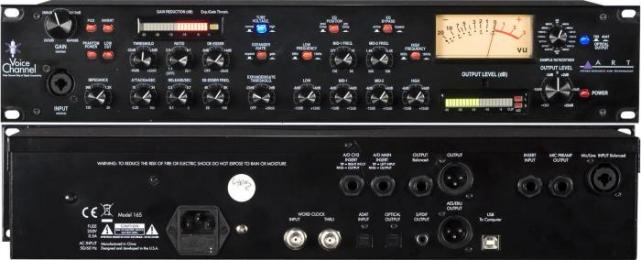
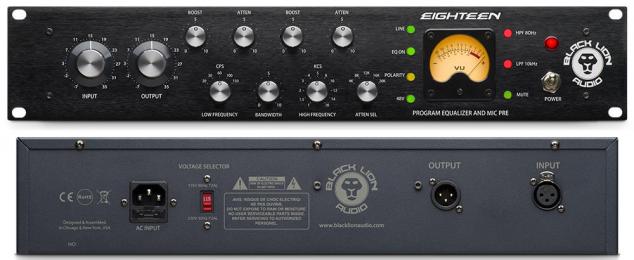
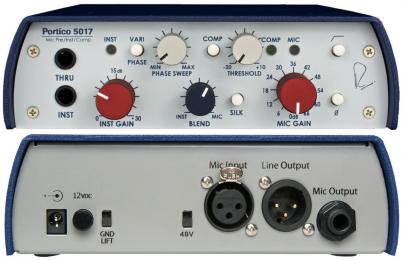

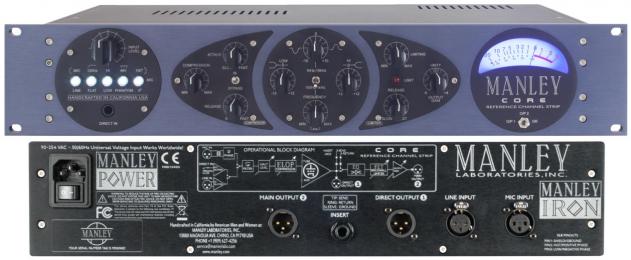

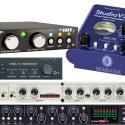
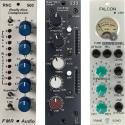
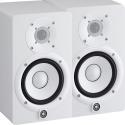
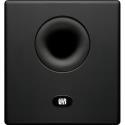


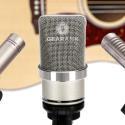
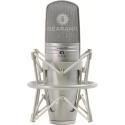
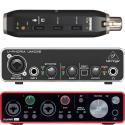
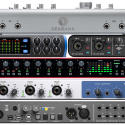
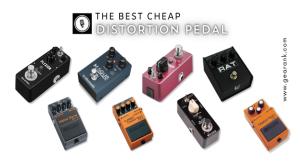
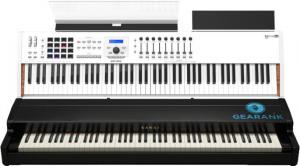
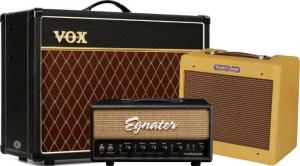
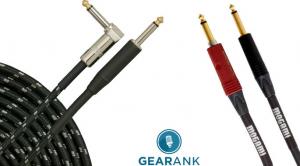
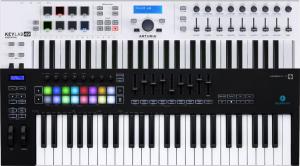
Comments
The following channel strips
Submitted by Jason Horton on
The following channel strips came off our recommended list when we published the October 2022 Edition:
Publication of our December
Submitted by Jason Horton on
Publication of our December 2021 Edition resulted in the following channel strip being removed from the recommended list above: TASCAM TA-1VP.
As a result of our June 2020
Submitted by Jason Horton on
As a result of our June 2020 update, the following has come off the recommended list above, but you can still view our analysis of it:
Why there is no stereo units?
Submitted by Filip Zawadzki (not verified) on
Why there is no stereo units?
I've just completed a review
Submitted by Jason Horton on
I've just completed a review of the category and there were no eligible 2 channel options available under $500 to include in this guide.
hello and sorry for maybe
Submitted by sbranzo (not verified) on
Hello and sorry for maybe silly question but i am kinda a newbie in this field. I recently wanted to build a small home studio and wanted to ask if any of the above are good tools for mastering. All of the strip channels showed are "mono", this means that I need a pair if I want to master a whole song, one for each channel? Or i can simply bounce all the tracks in a single track and then master/eq on the strip? Thank you in advance for your support!!!
Once you mix the stereo
Submitted by Jason Horton on
Once you mix the stereo tracks into mono you can't separate them back to stereo. It sounds like you haven't had the chance to do much mastering yet so I suggest you look at some guides on the topic - here's one to start with.